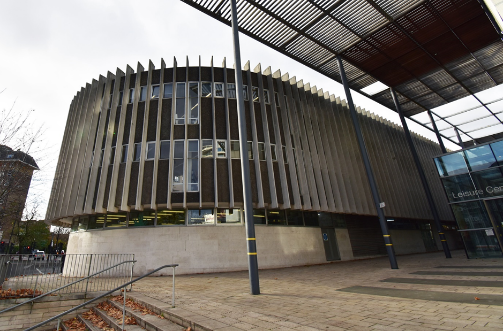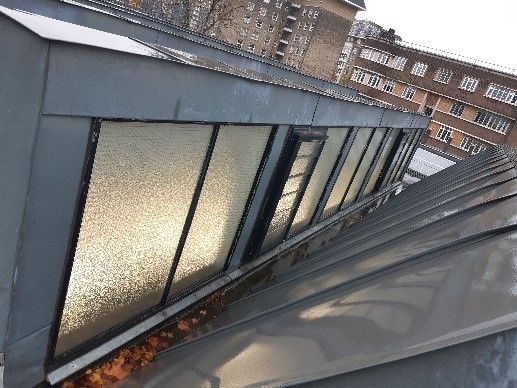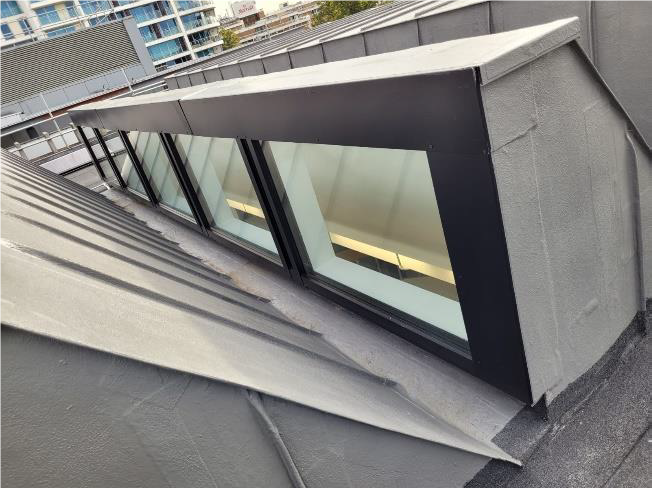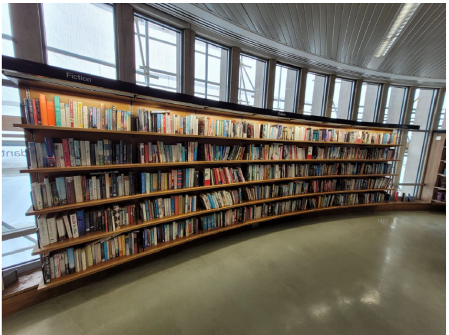
To coincide with CILIP's Green Libraries Conference on 24 March 2023, we are sharing this case study from Camden libraries.
Swiss Cottage Library
Swiss Cottage Library is seen by many as a masterpiece among London’s civic buildings and was designed by Sir Basil Spence, opening to the public in 1964. The library which is 52,506 square feet, is an important community hub, event space and the largest library operated by Camden Council.
The library needed renewal with fabric, mechanical and electrical infrastructure being at end of life, leading to poor internal conditioning of the building and high levels of heat loss. This combined with the knowledge that the library is also one of the largest consumers of energy on the council’s estate, made it a priority site for improvement. With the inception of the Public Sector Decarbonisation Scheme (PSDS) it was an ideal time for the council to deliver improvements that would secure the site’s future whilst also looking to introduce low carbon technologies to meet the council’s commitment to do everything it can to make Camden Net Zero by 2030.
Over a 2-year period, the council designed and delivered a project that would improve energy efficiency, decarbonise the heating source and address fabric repairs at the library. The final cost was £3.7m, of which £1.4m was funded through the Public Sector Decarbonisation Scheme and the remaining £2.3m by the council. The first phase focused on the upgrade of all existing florescent lighting to LED lighting and the upgrade of existing single-glazed windows and north lights to high quality double glazing. The second phase of works included the installation of an Air Source Heat Pump which is now the primary heat source to the building, whilst internal wall and roof insulation and new air handling units with heat recovery were also introduced to reduce heat loss. The project is predicted to make significant savings to the council’s running costs at more than £31,000 a year whilst also delivering annual carbon savings of 138 tonnes of CO2e.
The funding from PSDS has enabled the council to go beyond a like for like replacement solution and deliver a project that has holistically aimed to improve the building fabric before transitioning to a low carbon heating technology . This would not have been possible without the funding that was made available from the PSDS fund, with council budgets continuing to be stretched. The project will ensure that building users will have better comfort levels and will ensure that it remains an important hub for use by the local community. The project is also being used a blueprint for future low carbon retrofits that the council is planning across its corporate estate.


Insights into challenges and successes faced by the grant recipient during project delivery.
- A close relationship and clear communication between the council and its contractors meant that any significant increases costs for procuring equipment were communicated ahead of time and avoided.
- As the library is Grade II listed, full planning permission and listed planning request was required. Historic England also needed to be consulted during the process. This process took longer than expected, which increased the delivery period. The council kept Salix Finance aware of progress and were able to access an extension to complete the works.
- The building was kept open to the public throughout the delivery of the project. For some measures, such as the lighting replacements and north lights, a phased installation took place across the building. Installations also took place during evenings and weekends. Building users, property managers and library staff were kept informed of the project’s impact on service throughout the delivery, to ensure that contractors could progress with their works, whilst disruption to building users was minimised.
- Asbestos was contained in the mastic and packers that held the old windows in place. The windows were removed under controlled conditions (airtight tent) and the openings boarded. Once clearance certificates were issued, the tents were removed and the window fitters could install the new windows. The use of tents and zoned areas meant we kept the library open at all times.
- Whilst delivering the retrofit works, the project team uncovered other critical maintenance work that was required to the building, which would otherwise not have been identified. With scaffolding already in place, the council has been able to deliver these improvements at the same time through its own budgets, with some savings in cost.
Advice for future applicants
- Ensure that you have a good and constant communication with your lead contractor and ensure that you are up to date on when orders need to place to avoid any cost increases.
- For listed building, consult with your planning authority whilst designing the project and ensure that they are part of the retrofit journey to ensure that project designs meet planning requirements.
- Be prepared to uncover other maintenance and repair work in the building that may need to be addressed once you start your low carbon retrofit.
Next steps
Camden Council are now looking at similar projects at Highgate and West Hampstead Libraries
